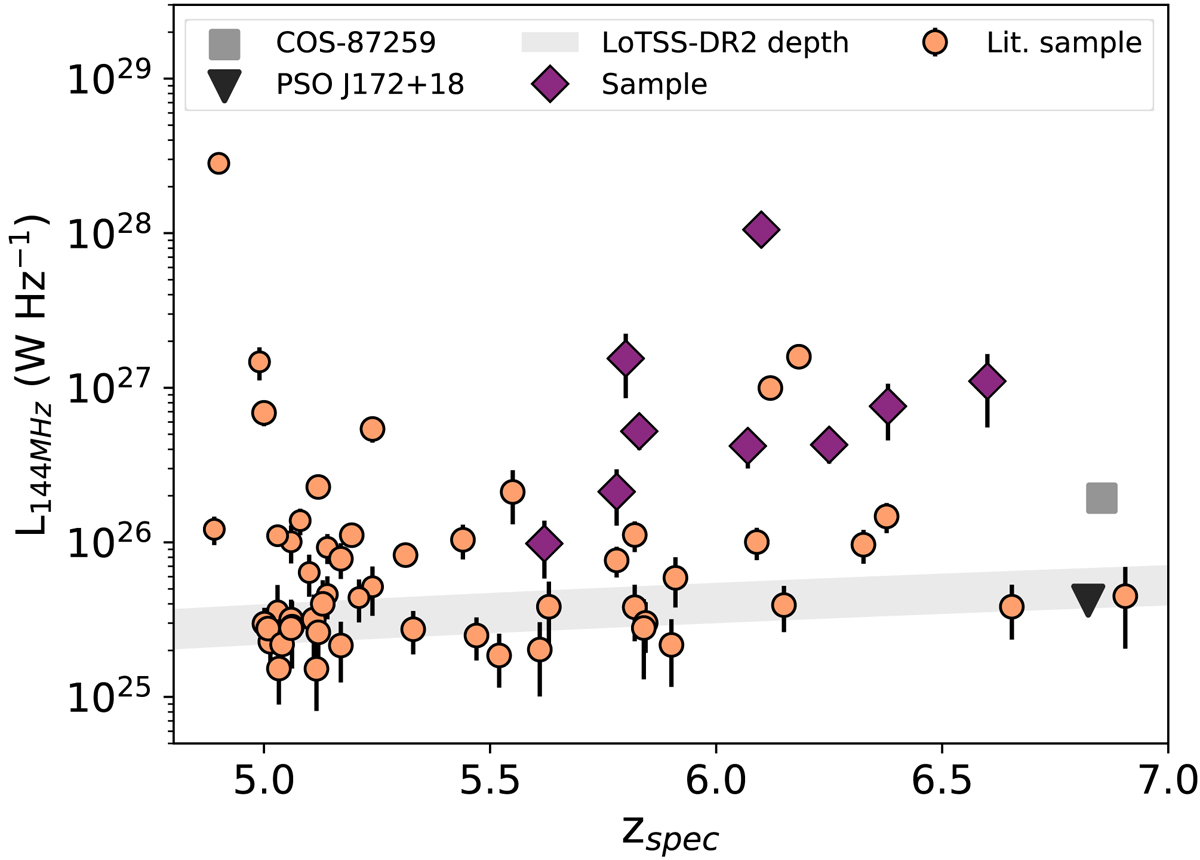Fig. 1.

Download original image
Radio luminosities at 144 MHz versus spectroscopic redshift of our selected sample and other known LOFAR detected quasars compiled by Gloudemans et al. (2021, 2022). Our sample probes some of the brightest and highest redshift radio-loud quasars currently known at low frequencies. The heavily obscured AGN COS-87259 is currently the highest redshift radio-loud quasar known and has been detected by LOFAR (Endsley et al. 2023). The two radio-loud quasars around z ∼ 6.1 (J1427+3312 and J1429+5447) have not been included in our sample because their radio spectra have already been studied by Shao et al. (2020, 2022), with J1427+3312 showing a turnover around 1.7 GHz rest-frame.
Current usage metrics show cumulative count of Article Views (full-text article views including HTML views, PDF and ePub downloads, according to the available data) and Abstracts Views on Vision4Press platform.
Data correspond to usage on the plateform after 2015. The current usage metrics is available 48-96 hours after online publication and is updated daily on week days.
Initial download of the metrics may take a while.


